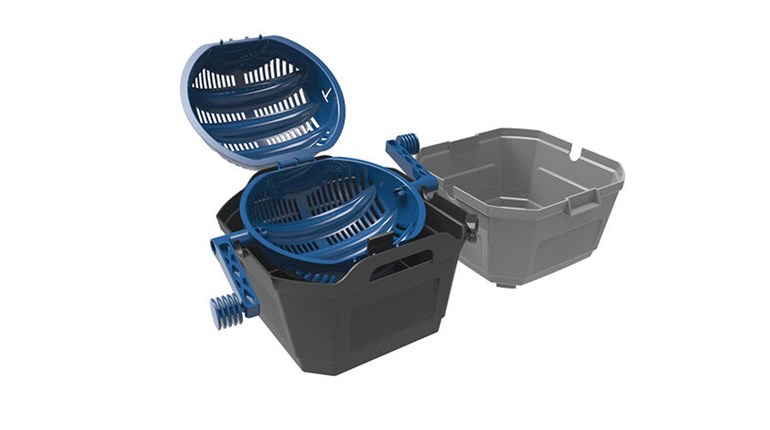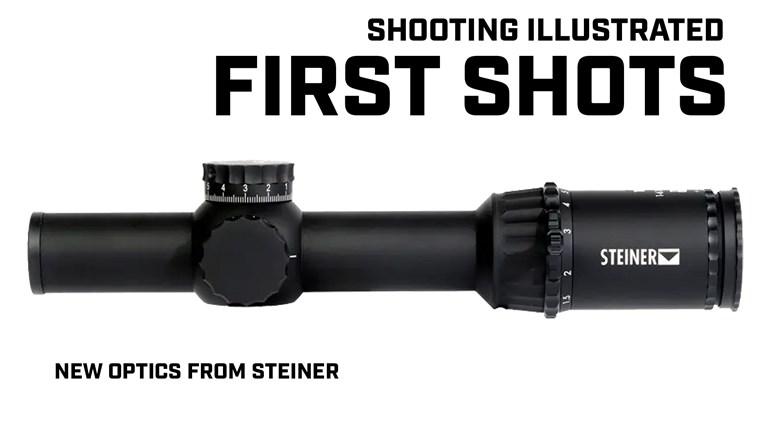
Bah! I care not for your Glock, says the 1911 snob. Yippee! A brand-new Glock, says the Glock fanboy. Both are wrong. This handgun includes all the aforementioned traits, and is imported by a wholly owned subsidiary of an Austrian company located in the American South, but it is no Glock. Rather, it is from that other Austrian gun maker known more for its rifles—Steyr—and it boasts some features sure to please Glock fans and critics alike.
The Steyr M-series was formally introduced in 1999 with the launch of the M9, a 9 mm pistol using the Browning-designed short-recoil operating system. Versions chambered in .40 S&W and .357 SIG followed. In 2004, the M-series received an upgrade that included a redesigned grip and a rail section along the dustcover for mounting accessories. Despite the M-series being well received internationally—including contract awards for Malaysian, Pakistani and Taiwanese police and military forces—Steyr ceased exporting the pistols to the United States in 2009, not because they were unpopular, but because unfavorable exchange rates made selling them at competitive prices impossible. Thankfully, in late summer 2010, exports resumed, and the gun is again available to American consumers. Steyr made a small improvement to the 2010 version, with a roll pin through the slide above the firing pin to smooth out trigger pull, addressing a minor complaint with the 2004 upgrade.
Though it is hopeless to avoid comparisons to the Glock, the M40-A1 is truly its own gun, with only passing resemblance to its co-national icon. The most recognizable difference is found in the grip, which has a pronounced cutout for thumb webbing and is set at a 111-degree angle as opposed to the Glock's 109-degree grip-to-frame angle. That small difference in angle is not what makes the Steyr's grip an improvement over the much-maligned (by Glock-haters) Glock grip—the smaller palm swell is the real bonus. Combined with the cutout, the M40-A1's grip proved more comfortable in my diminutive hands.
One area where the Steyr pistol might have a leg up on all competitors is its sights. The low-profile sighting system combines a triangular front sight with a trapezoidal rear notch, drawing your eyes to the front sight and making fast aiming a cinch. It took no time at all to learn this innovative sight combination. What's more, the sights' low profile is further enhanced by the M40-A1's low-profile slide upon which they are mounted, making the pistol ideal for concealed carry. The geometry also results in a low bore-axis, making the gun point very naturally.
Apart from its Austrian parent, the M-series has also been compared to the Glock primarily because of its trigger-paddle safety, which prevents enough rearward movement to make it nearly impossible to fire without intentionally pulling the trigger. It's true—both the M-series and Glock pistols share this feature, but apart from automatic, internal firing-pin-block and drop safeties, the M40-A1 includes a key-lock safety most shooters will never use. That's because you need to keep the key handy if you wish to fire the pistol, and that makes the pistol far from easy to deploy. But, a manual safety is present for those who demand such a feature.
Disassembly is incredibly simple, besting most other designs in terms of ease. After removing the magazine, clearing the chamber and pointing the gun in a safe direction, pull the trigger to decock the pistol. Then, press in on the key-lock safety mechanism while pivoting the disassembly lever down. The slide can now be taken off the frame, allowing removal of the recoil spring and barrel for cleaning. Reattaching the slide is even easier, as the disassembly lever will automatically return to the closed position when the slide is retracted.
Two, 12-round steel magazines are shipped with the M40-A1, which is good because you'll be sending plenty of rounds downrange thanks to the overall comfort of this well-designed handgun. Recoil from the .40 S&W, normally sharp and unpleasant, is mitigated thanks in large part to the cutout at the top of the grip. It forces a high handhold, which is better both for accurate shot placement and for absorbing felt-recoil.
On the range, the M40-A1 proved accurate and reliable, digesting all three tested loads without a glitch and providing an overall group average of 2.5 inches. I can't praise the sights enough; they simply work—well, fast and easily. A tritium insert in the front sight would be a welcome addition, but for shooting with adequate ambient light, these sights are phenomenal. I would love to see Steyr rid the M-series of the pesky key safety, but since the lock doubles as part of the takedown system and you can simply choose not to use the key, it is neither a cosmetic blemish nor a calamitous bug.
Simply put, the M40-A1 is a comfortable pistol that has a variety of concealed-carry-friendly features. For those looking for less weight in a carry gun, Steyr offers its S40, which is about 3.2 ounces lighter than the M40-A1's 1.7 pounds, but considering the .40 S&W chambering, I'll stick with the heavier pistol. So, Glock enthusiasts and 1911 aficionados, have we found the pistol to settle your quarrels? Probably not, but the Steyr M40-A1 is an excellent handgun in its own right.
Specifications
Manufacturer: Steyr MannlicherImporter: Steyr Arms; (205) 655-8299,www.steyrarms.com
Action Type: Short-recoil-operated,semi-automatic
Caliber: .40 S&W
Capacity: 12+1
Frame: Reinforced-polymer
Slide: 6.75 inches; Mannox-coated milled steel
Barrel: 4 inches; cold-hammer-forged steel
Rifling: 6 grooves; 1:16-inch RH twist
Sights: Triangular front post, trapezoidalrear notch; adjustable for windage
Trigger Pull Weight: 5 pounds, 9 ounces
Length: 7.2 inches
Width: 1.2 inches
Height: 5.1 inches
Weight: 27.2 ounces
Accessories: Hard case, manual, two12-round magazines, two safety keys
MSRP: $649
Shooting Results(Load tested, followed by velocity, smallest group produced, largest and group average)
Hornady TAP 180-grain FPD, 924, 2.1, 3.2, 2.7
Speer GoldDot 165-grain GDHP, 1,122, 2.0, 3.4, 2.6
Winchester Bonded PDX1 165-grain JHP, 1,156, 1.7, 2.7, 2.2
Velocity measured in fps at the muzzle for 10 consecutive shots with an Oehler Model 43 chronograph. Temperature: 74 degrees Fahrenheit. Accuracy measured in inches for five consecutive, five-shot groups from a Caldwell Handgun Rest at 25 yards.





































